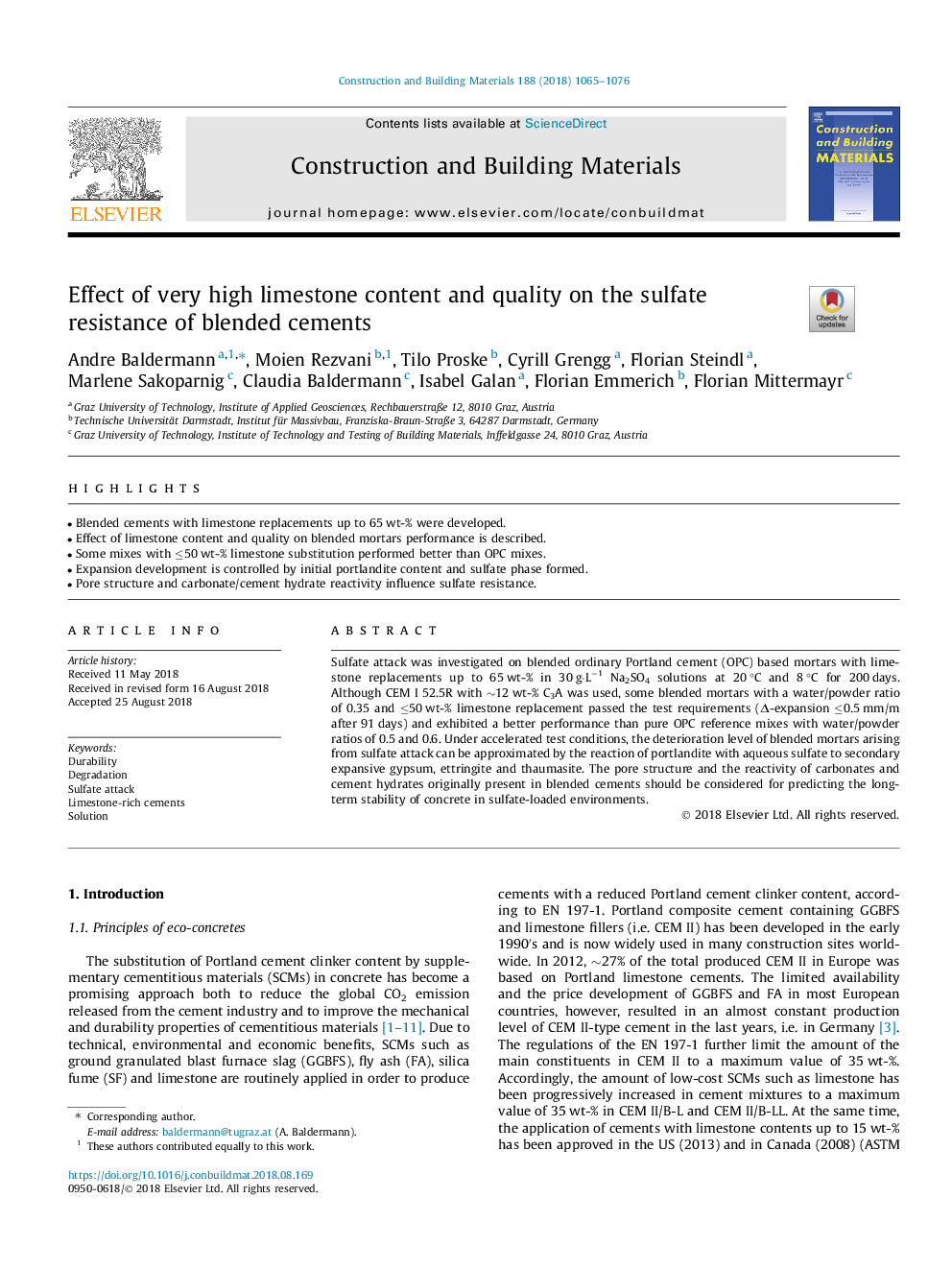| Article ID | Journal | Published Year | Pages | File Type |
|---|---|---|---|---|
| 11032544 | Construction and Building Materials | 2018 | 12 Pages |
Abstract
Sulfate attack was investigated on blended ordinary Portland cement (OPC) based mortars with limestone replacements up to 65â¯wt-% in 30â¯g·Lâ1 Na2SO4 solutions at 20â¯Â°C and 8â¯Â°C for 200â¯days. Although CEM I 52.5R with â¼12â¯wt-% C3A was used, some blended mortars with a water/powder ratio of 0.35 and â¤50â¯wt-% limestone replacement passed the test requirements (Î-expansion â¤0.5â¯mm/m after 91â¯days) and exhibited a better performance than pure OPC reference mixes with water/powder ratios of 0.5 and 0.6. Under accelerated test conditions, the deterioration level of blended mortars arising from sulfate attack can be approximated by the reaction of portlandite with aqueous sulfate to secondary expansive gypsum, ettringite and thaumasite. The pore structure and the reactivity of carbonates and cement hydrates originally present in blended cements should be considered for predicting the long-term stability of concrete in sulfate-loaded environments.
Related Topics
Physical Sciences and Engineering
Engineering
Civil and Structural Engineering
Authors
Andre Baldermann, Moien Rezvani, Tilo Proske, Cyrill Grengg, Florian Steindl, Marlene Sakoparnig, Claudia Baldermann, Isabel Galan, Florian Emmerich, Florian Mittermayr,
